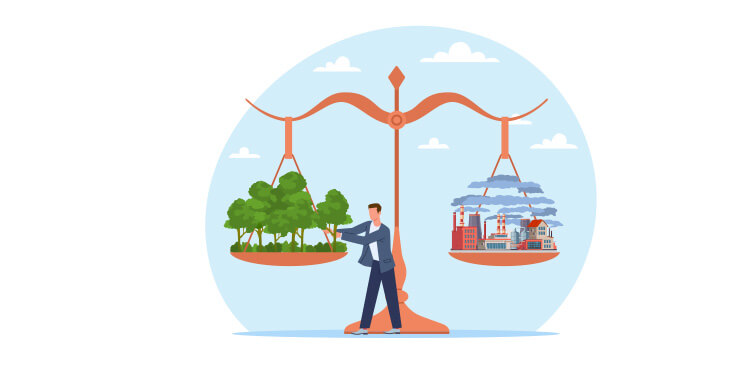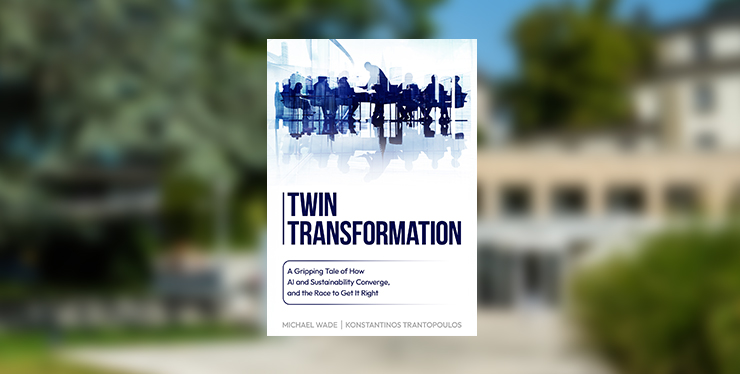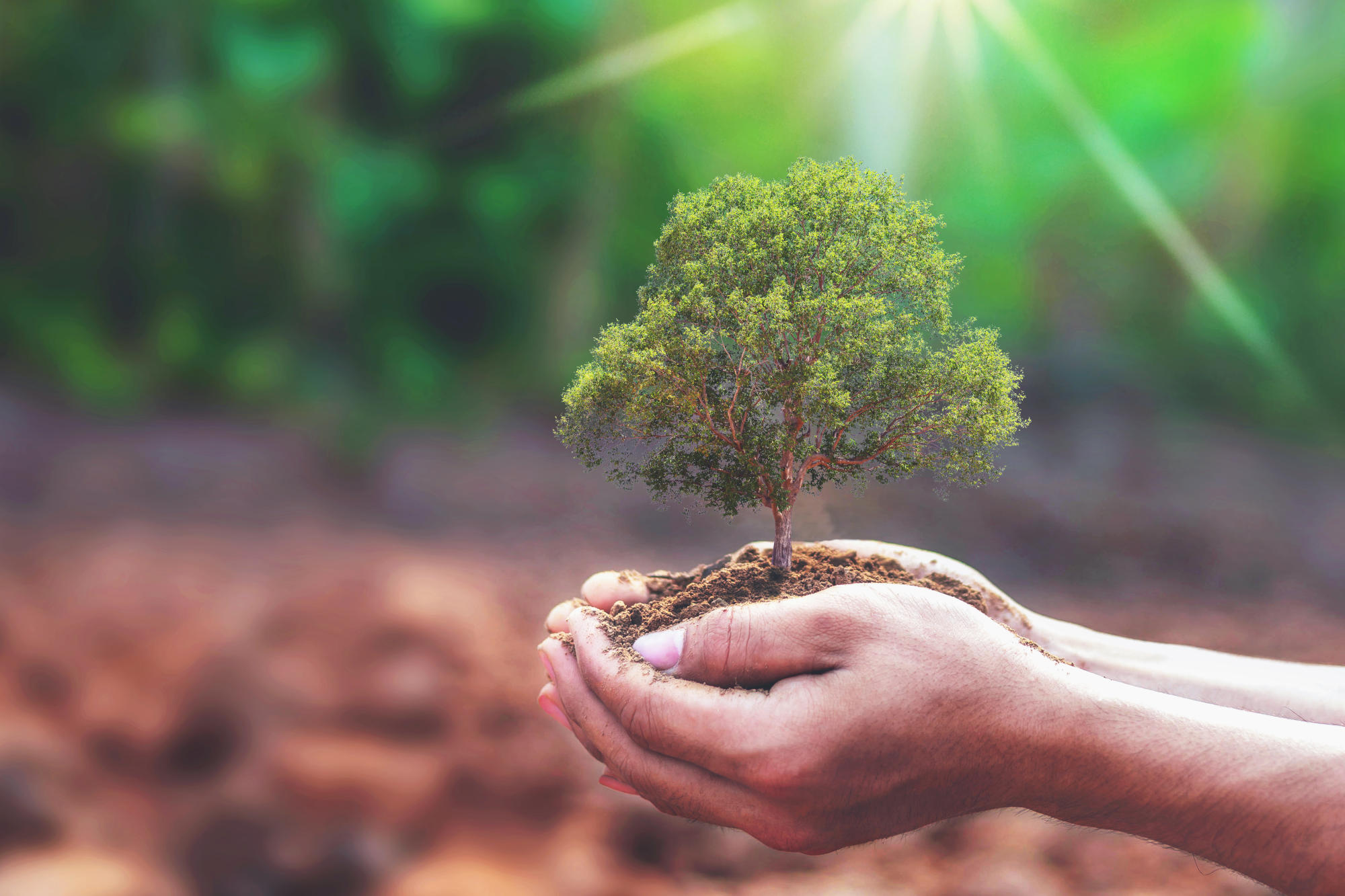
Going forward with tomorrow's sustainability approach
The notion of sustainability-as-less –fewer people, resources and production together with less consumption and pollution – is actually not enough.
On one hand, we absolutely need to do all of these things if we are going to give our children anything like the planet that we inherited, but it needs to be complemented by another approach that leverages the growth imperative that got us in this mess in the first place.
To understand why sustainability-as-less likely won’t solve our environmental challenges, consider the traditional equation for environmental impact:
Environmental Impact = Population x Affluence x Technology.
Given this, environmental damage can be limited by reducing population, getting poorer and improving technology.
We need to limit or reverse population growth as much as possible, but recognize that it isn’t likely to be enough. We need to consume less per person. The unsustainable affluent lifestyles of the 430 million in the West are going to be emulated by another 600 million from the developing world by 2030 according to the World Bank. As for technology, the sustainability-as-less concept focused on reducing damage/unit of economic output, be it through reducing CO2 output per unit of product, reducing packaging, etc. This is the thinking behind so many companies’ sustainability reports that brag about a 10% reduction of this input resource or a 15% reduction of that pollutant.
But I dare say that this approach will simply not do the trick. The apostles of yesterday’s sustainability preach about the potential savings and gains in attracting employees through efforts to, say, reduce waste by x percent per year—and these are sometimes very real and very substantial gains! Unfortunately, often sustainability-through-reduction practices are, at the end of the day, simply more expensive, particularly if they are done to the extent required for us to be truly sustainable. And in a current environment, this is a strategic liability. And firms are generally designed toward profit maximization.
Thus, to a large degree, sustainability issues have been and remain a secondary issue and are often (unfortunately, but quite rightly) seen as a cost and a strategic liability. Therefore firms are not likely to do enough in terms of reduction to turn things around.
But what if we took a radically different angle? What if we turned the T in the I=P x A x T equation to a negative number? What if our environmental impact was less than zero and if we have environmental improvement with each economic unit of output? What would this look like? This would turn traditional sustainability thinking on its head.
Instead of hoping for a reduction of population (in the face of the reality of an increasing population) or reduction in affluence (in the face of a reality of a 125% increase in the world’s middle class), we could leverage these growths to create a negative value for I, that is, environmental improvement!
This would look like cement that has a negative CO2 footprint; or waste product pollution being turned into housing materials. This could also play out in the form of an industrial system that has no waste, or even better, that takes wastes or pollutions from outside the system and converts them into products and services as well as environmental benefits.
Cradle to Cradle, a popular book by William McDonough & Michael Braungart, provides a cherry tree as a beautiful model for us to replicate. In full bloom, a cherry tree is stunning in its abundant beauty of hundreds of thousands of blossoms. A visit to Japan during the full bloom offers up incredible experiences. Yet how many of those blossoms eventually yield new trees? Maybe just one or two, which is a miniscule percentage! The cherry tree is in a sense incredibly inefficient and horribly wasteful with its ridiculous bounty. Yet, and here is the model for tomorrow’s sustainability, there is no waste in the system as a whole. The blossoms fall and are immediately an input to new biological systems – ants, microbes, worms and others feast on this free input – and eventually they produce their own “waste” which, in turn, is an input that feeds the cherry tree for its next season of ludicrously abundant blossoms. Bountiful and wasteful alone, the cherry tree’s ecosystem has no waste.
The study of these beautiful, intricate closed-loop systems is called ecology. Tomorrow’s sustainability is called industrial ecology and holds out the promise for a rich, prosperous and flourishing society that has no waste.
In a fully functional industrial ecology, waste streams from one industry are treated as inputs to another. We have very few examples of completely sustainable industrial ecologies, but in my strategy work with companies I see more and more companies stumbling into it as they look for new businesses and new business models. For example, the number of firms that are looking into waste-streams as critical inputs is stunning; I’d predict that the waste industry will look nothing like it does today. One smart firm I work with takes waste from municipalities (and gets paid for it), using some of it as in input for construction materials (which they get paid for) and sells the rest to incinerators for fuel (netting yet a third revenue stream).
The imperatives that drive firms’ decisions are profit based, but as their standard raw resource inputs become more expensive and less available as there are growing waste streams from other industries, and as regulations are increasingly stringent around raw resource usage and pollution, the opportunities multiply.
Firms need to be creative, explore profitable business models with waste streams as inputs, leading to overall positive (not just less negative) environmental impacts. They need to think about getting into these new business models and market spaces more and more, rather than focusing on just the old school notion of less and less.
Michael Yaziji is Professor of Strategy and Organizations.
Research Information & Knowledge Hub for additional information on IMD publications
In today’s boardrooms, two themes dominate: rapid technological advancement and the growing urgency of environmental accountability. But a new source of competitive advantage is emerging, not from A.I. or sustainability alone, but from the deliber...

In President Trump’s second term, a variety of executive actions have reversed social progress. Withdrawing from the Paris Climate Agreement presents a significant challenge to bending the global emissions curve since it is one of the world’s larg...
We systematically review business research concerning the planetary boundaries framework: A natural science framework that identifies nine Earth system boundaries that govern the safe operating space for humanity. Ten years after the introduction ...
Environmental claims are becoming increasingly common in corporate disclosures, but whether they correspond to genuine environmental action rather than greenwashing remains unclear. This paper explores the relationship between companies' environme...
Research Information & Knowledge Hub for additional information on IMD publications
in I by IMD
Research Information & Knowledge Hub for additional information on IMD publications
Research Information & Knowledge Hub for additional information on IMD publications
Research Information & Knowledge Hub for additional information on IMD publications
Research Information & Knowledge Hub for additional information on IMD publications
in Stanford Social Innovation Review Online 2 June 2025
Research Information & Knowledge Hub for additional information on IMD publications
in Journal of Management Studies June 2025, vol. 62, no.4, pp. 1811-1846, https://doi.org/10.1111/joms.13150
Research Information & Knowledge Hub for additional information on IMD publications
in Sustainable Development 29 May 2025, ePub before print, https://doi.org/10.1002/sd.3544
Research Information & Knowledge Hub for additional information on IMD publications
Research Information & Knowledge Hub for additional information on IMD publications
in I by IMD
Research Information & Knowledge Hub for additional information on IMD publications







